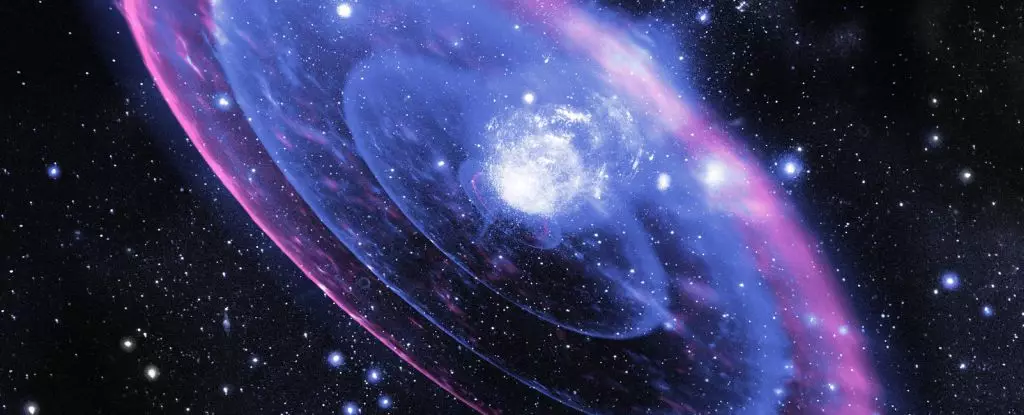A grain of dust collected from an ancient meteorite found in Antarctica has brought to light some incredibly fascinating revelations about our universe. This tiny speck, known as olivine, has a composition that defies our expectations, pointing towards an extraterrestrial origin. Isotopic analysis of this grain has indicated that it could only have been formed in the dying embers of a star that existed long before our Solar System came into being. These presolar grains are exceptionally rare and hold invaluable information about the cosmic environments that existed before our own.
Presolar grains are notoriously difficult to identify due to their minuscule size and their incorporation into meteorite samples. The olivine grain discovered by a team of scientists led by astrogeologist Nicole Nevill using atom probe tomography has shattered previous records with its extremely unique isotopic ratios. The distinctive magnesium isotopic composition of this grain stands out in stark contrast to anything found within our Solar System. The groundbreaking discovery of an isotopic ratio of 3,025 indicates a formation process in a hydrogen burning supernova, a type of star previously unknown to science.
Meteorites serve as cosmic time capsules, offering insights into the early formation of our Solar System and the composition of interstellar dust. While most meteorites originate from within our own Solar System, occasionally researchers stumble upon grains like the olivine specimen in the Antarctic meteorite Allan Hills 77307 that reveal a different story. This carbonaceous chondrite meteorite contains a precious presolar grain with an unusually high magnesium-25 ratio, pointing towards a cataclysmic event beyond our solar neighborhood.
By employing advanced techniques like atom probe tomography, scientists were able to delve deeply into the structure of the olivine grain and uncover its extraordinary composition. The minute size of the grain, measuring only 400 by 580 nanometers, posed a significant challenge that was overcome by the precision of this analytical method. The revelations brought forth by the atom probe tomography shed light on the existence of hydrogen burning supernovae, a newly identified stellar phenomenon that played a crucial role in the formation of this enigmatic presolar grain.
The discovery of the ancient presolar grain in Antarctica opens up new frontiers in our understanding of the cosmos. The detailed analyses conducted by researchers provide a glimpse into the mysterious realms of space, where stars undergo violent transformations that shape the elements around us. As we continue to push the boundaries of scientific exploration, the ability to uncover and decipher these celestial artifacts will pave the way for further discoveries and insights into the intricate tapestry of the universe.


Leave a Reply